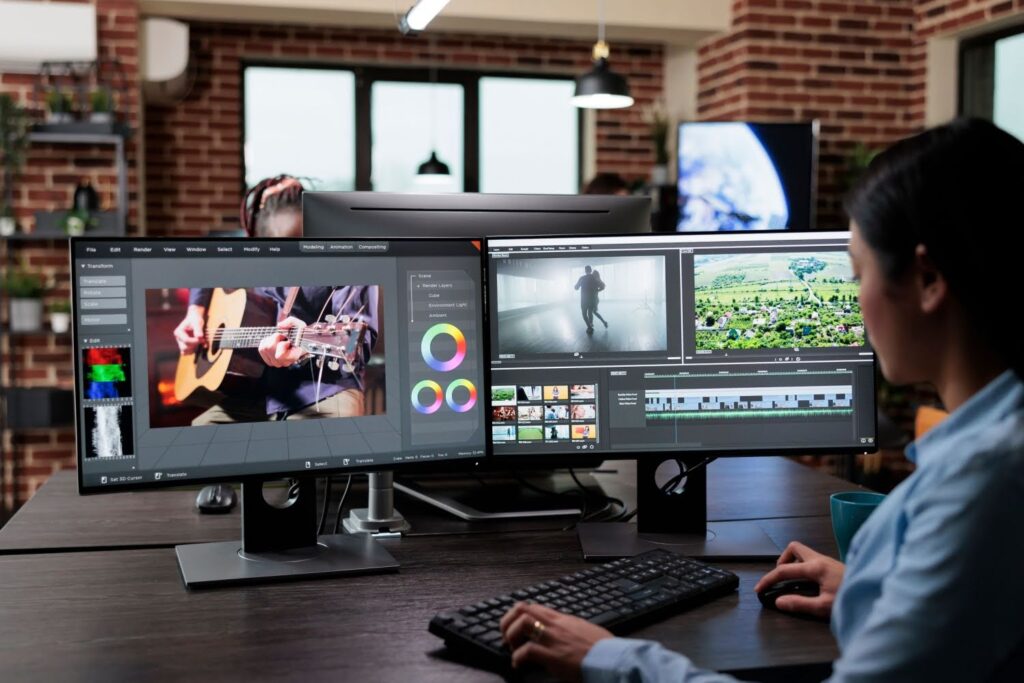The pain of fragmented production processes, inconsistent branding, and the relentless demand for fresh, engaging content is all too familiar. This need for a streamlined, scalable solution for content creation and management is where the art of video editing comes into play. Learning how to edit videos efficiently can be a game-changer for anyone in the field of digital content creation.
The Importance of Video Editing in Digital Content Strategy
Video content stands at the forefront of digital marketing strategies. Its ability to engage, inform, and influence audiences is unparalleled. However, producing captivating videos consistently and efficiently remains a stumbling block for many. This is where mastering how to edit videos becomes crucial.
Getting Started: Understanding the Basics
Before diving into the technical aspects, it’s essential to grasp the core principles of video editing. This involves understanding the narrative structure, visual aesthetics, pacing, and the role of audio. These elements form the backbone of any successful video project.
Step 1: Choosing the Right Video Editing Software
The first step in learning how to edit videos is selecting appropriate software. For beginners, user-friendly platforms like Adobe Premiere Pro, Final Cut Pro, or even free options like DaVinci Resolve and Shotcut are excellent choices. Consider factors like your computer’s capabilities, budget, and the specific features you need.
Step 2: Organizing Your Workspace and Assets
A common challenge in content production is managing assets and maintaining consistency. Start by organizing your workspace within the editing software. Create folders for different types of media – video clips, images, audio files, and graphics. This organization is crucial for efficiency and consistency in your projects.
Step 3: Getting Familiar with the Interface
Spend time understanding the interface of your chosen editing software. Most have a similar layout: a library to manage your media assets, a preview window, a timeline for arranging clips, and an array of editing tools. Familiarizing yourself with these areas is essential for efficient editing.
Step 4: Basic Editing Techniques
Now, let’s delve into how to edit videos. Start by importing your footage into the software. Then, begin the process of cutting and arranging clips on the timeline. Pay attention to the narrative flow. Trimming and splitting clips might seem basic, but they are fundamental to creating a compelling story.
Step 5: Adding Transitions and Effects
Transitions and effects can enhance your video, but they should be used judiciously. Overusing them can detract from the content’s quality and professionalism. Stick to simple cuts most of the time and use transitions like fades or dissolves when necessary to maintain a polished look.

Step 6: Working with Audio
Audio is half the experience in video content. Learning how to balance dialogue, background music, and sound effects is crucial. Ensure the audio levels are consistent and the sound is clear. This aspect can significantly impact the perceived quality of your video.
Step 7: Color Correction and Grading
Color correction and grading are about consistency and style. Correct any color imbalances first, then apply color grading to achieve a specific look or mood. This step can dramatically improve the visual appeal of your video.
Step 8: Adding Text and Graphics
Text and graphics are vital for branding and conveying information. Use them to reinforce messages, introduce segments, or display call-to-actions. Ensure they align with your brand’s visual identity to maintain consistency across your content.
Step 9: Exporting Your Video
Once your video is edited, it’s time to export. Choose the right format and settings for your platform – whether it’s for social media, a website, or a presentation. Remember, different platforms may have specific requirements for video formats and quality.
Step 10: Feedback and Revisions
After exporting, gather feedback. This step is crucial for improvement. Be open to critiques and ready to make revisions. This iterative process is essential for developing your skills in how to edit videos.
Overcoming Challenges in Video Editing
- Time Management: Efficient editing takes practice. Set realistic deadlines and break your editing process into manageable steps.
- Staying Updated: The digital landscape is continually evolving. Keep yourself updated with the latest trends and software updates.
- Consistency in Branding: Use templates and presets for consistent branding. This approach saves time and maintains a uniform look across all your content.
- Scalability: As your skills improve, you might need to scale your production. Consider using more advanced software or delegating tasks within a team.
Conclusion
Mastering how to edit videos is a journey of continuous learning and adaptation. By following this step-by-step guide, beginners can embark on this journey more confidently. Remember, the goal is not just to produce content but to craft stories that resonate with your audience. With practice, patience, and persistence, you can overcome the challenges of producing and managing high-quality video content at scale, thus elevating your brand’s digital presence to new heights.
If you need a trusted partner for creating digital content or producing and repurposing all your creative content, book a call with us now!